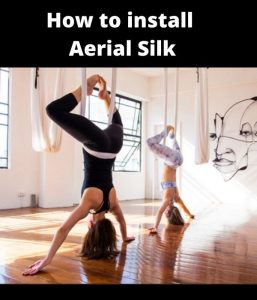What exactly is Resistance training?
Resistance training is a form of strength training in which each effort is performed against a specific opposing force generated by resistance(ie. resistance to being pushed, squeezed, stretched or bent). Exercises are isotonic, if a body part is moving against the force. Exercises are isometric if a body part is holding still against the force. All resistance training involves the pushing or pulling of an object which requires muscle exertion, no matter how much or how little. Outside water, muscle makes up the majority of human body structure. Every part of the body is affected by muscles and depends on their control and strength. When you smile you are using muscles, when you wink, sneeze, laugh, frown, throw, Run, lift, jump and breathe, you are using muscles.
Resistance exercise is used to develop the strength and size of skeletal muscles. When properly performed, resistance training can provide significant functional benefits and improvement in overall skeletal system. If you are going to live a long healthy life you need to make sure that your foundation is firmly held Together by muscles.
Interestingly , resistance training Works by causing damage to the muscle cell, which in turn pushes the body to help the muscles grow stronger. The breakdown of the muscle fibre is called catabolism, and repair and growth of the muscle tissue is called Anabolism. Anabolism means to grow and that’s exactly what happens after you break down the muscle fibres with resistance exercises. In fact many biological processes of growth in the body requires some form of breakdown or catabolism prior to regrowth.
Benefits of resistance training
- Builds muscle strength and tones. Humans lose 5 pounds of muscles every decade after age 30.
- The number of muscle fibres declines with age. From age 32-70, we can do lose more than 25% of the type two muscle fibres, in our body however the process can be slowed by using resistance training
- Its been shown to build bones.
- Osteoporosis is a condition of accelerated bone mineral loss which leads to fractures. It can be a crippling disease, with age, especially in women. Resistance training helps in their also .
- Most often can lead to a fewer falls in elderly
- Resistance exercises can raise metabolic rate which is an important factor in maintaining body weight.
- There is also some evidence that resistance exercise helps lower moderately high blood pressure
How to begin?
First decide where you want to workout at home or gym? If you decide to workout at home then consider the exercise tubing, as an inexpensive but effective way to get started. You can buy free weights, bars, benches resistance bands etc. Consider hiring a fitness trainer, to workout with you at gym or out of home, if you are a beginner. It’s difficult to learn on your own how to do it yourself from a book or even a video. If you decide to workout at the gym, then you don’t have to worry because I will have trainers , and all the equipment which need to be used.
Define your goals
Toning up and getting stronger are the two major goals for any body. It will give you both, and you can expect strength gains in just a few weeks. Toning is usually immediate and how much muscle, you see depends on how much excess body fat you have. For instance, if you have lots of excess fat on the back of your arms, then you won’t see the triceps muscles right away. Likewise if you have excess fat on your belly then you won’t see six pack abs unless you reduce or eliminate the fat.
Design your plan
Weights:
Beginner should start with weights, that can be lifted for 10 to 12 reps to reach the fatigue with good form. It means, that you cannot lift the weight even one more time with good form. If you have to lean back or really struggle, then it’s too heavy. A good form fatigue ensures the gains and minimizes the risk of overstraining or injury.
Sets:
Beginners can start with one set, per exercise. You can do more if you have time but research shows that one set for beginners, leads to significant gains in the strength.
Time between sets:
Rest for less than 1 minute between sets, if you want to develop endurance and tone . Rest up to 3 minutes if you want to focus more on strength. The extra recovery time allows the muscles to work harder and lift more on the next set.
Bikini Body Guide Exclusive here

Order of exercise:
Design your plan so that large muscle groups are worked before smaller group. The theory is that if you fatigue a smaller muscle group first then the larger group won’t work as hard as it can. For example do bent over rows before bicep curls. Even though biceps work in both exercises, but since the larger and stronger back muscles are used in the rows they wouldn’t get a maximum work out if the biceps are fatigued. Another way to say it is that the biceps become the weakest link in the chain if you work them out first.
Exercises:
Select one or two exercises per muscle group . Use a list of at least two exercises for each group using, dumbbells or machines in an order of larger to smaller groups. The following exercises are suitable for beginners.
Chest: Dumbbell press, Dumbbell flyes, Chest press , Cable flyes
Shoulders: Side lateral raise, Front raise, Upright row

Back: Bent over row, Cable row pull down
Arms : Biceps curls, triceps kickbacks, triceps pull down on pulldown machine

Abs: Crunches , Cross knee crunches for the oblique muscles on the side of the abdomen

Legs: Squats, leg extensions and curls on the Machines, leg press

Rest and recovery: Remember that muscles grow during the down time, not when you train . Allow a day or two in between workouts, when you first get started so that the muscles can recover and grow . You should show up at your workouts refreshed and at least as strong as the previous workout. There will be days when you aren’t feeling stronger and you should expect them, so don’t get discouraged when this happen. Listen to your body.
Splits: A term used to describe how you organize your work out. For instance, you might decide to work only on chest and back on day one. Do remember, that this is a type of lifting, if you do want to get stronger and if you are more experienced. This is not necessary or recommended for beginners, because it’s too intense. It’s not only not necessary but it could lead to injury or overtraining
Key points to remember in resistance training
- Take plenty of rest between workouts and even between sets at least two minutes
- Change the workout routine every 6 to 8 weeks
- Try and work out at least four times a week
- Workouts for the entire major muscles minimum of three times in every two weeks
- Try to sleep 8 to 10 hours per day
- Eating regularly is most important, never go hungry.
- Drink lots of liquids
“Happy working out 🙂 “
Read Reviews/Testimonials of Bikini Body Guide Here..




